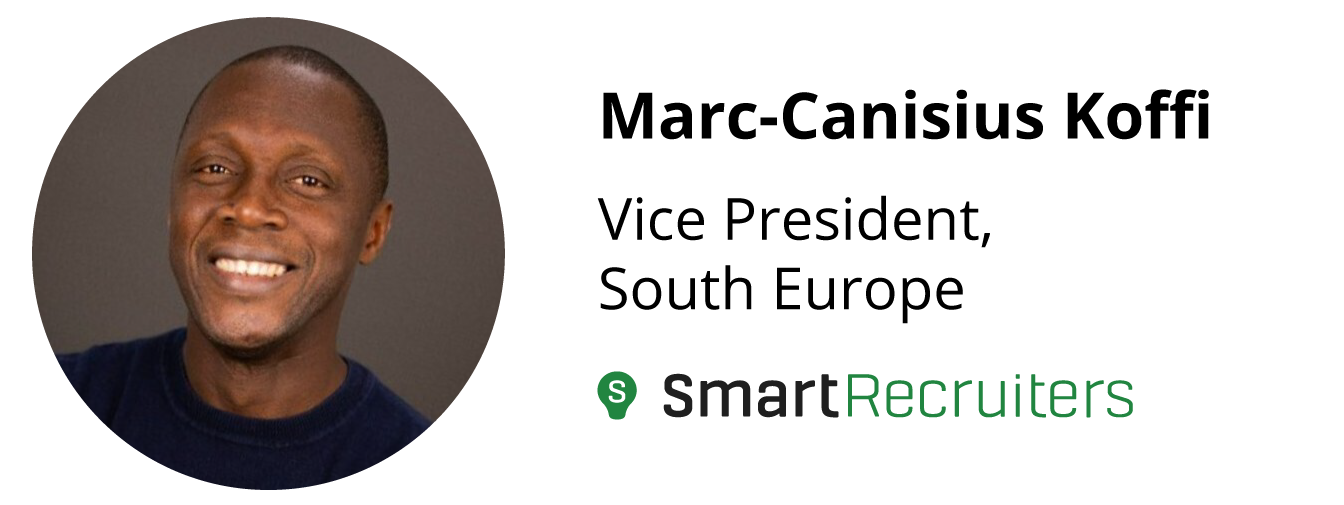The global talent shortage has a unique flavor in France–as it should, given the sophistication of French cuisine. With 80% of French companies reporting a talent shortage, talent acquisition leaders are taking a sophisticated approach to address it: they’re getting more strategic. According to LinkedIn 91% of recruiting professionals in France say TA has become a more strategic function over the past year.
A conversation with Marc-Canisius Koffi, Vice President, South Europe at SmartRecruiters revealed four ways that French talent leaders are adjusting their technology and processes to build a more strategic talent acquisition function. “Most companies are now struggling to find the right people, and that directly impacts their business,” he said. “When you have a strategic vision and the capability to leverage data, talent acquisition stays linked to business needs and moves away from just being operational.” Next-level data points that matter to the business include Hiring Success metrics like hiring velocity and net hiring score in addition to quality of hire, hiring manager satisfaction, and candidate experience rating.

1. Talent Attraction
Strategic talent attraction includes leveraging the data shared by candidates before they even apply. “Companies are realizing that they’re spending a lot of money to get more candidates but have no knowledge of the candidates themselves.” Companies with intelligent career websites have the strategic advantage because they can surface content through SEO and personalization, and connect candidates to the company in a CRM so that they can learn more about the company before applying.
2. Automation & AI
Despite the talent shortage, the uncertain economy has left many companies resource-constrained and asked to do more with less. “With automation, they can be more efficient,” Marc said. “Reducing the burden of manual task management makes the process faster.”
Speed is paramount in a talent shortage. “People want to be hired quickly,” Marc said, noting that the long hiring times that characterize the French talent marketplace are no longer expected. Greater investments in analytics and AI have become the norm. “AI combined with human oversight is welcome now,” Marc said, mentioning chatbots like SmartPal and the matching tool SmartAssistant. “It’s moved from something people are curious about to something that’s seen as helpful.”
3. Process Efficiency
Technology can’t do all the automation by itself; companies must invest in refining their processes to take full advantage of automation capabilities. The strategic vision for talent acquisition means having data that offers insight into workflows that involve each hiring team member. “The data helps you speak the same language as the hiring manager,” Marc said. It turns out hiring managers in France can be roadblocks to efficient hiring just as much as anywhere else. Investing in day-to-processes that support the overall goal of hiring quality talent is an essential component of a strategic function.
4. Connected Systems
“The ATS concept has reached a limit,” Marc said. “A talent acquisition platform is strategic because it accounts for the complete hiring process.” In today’s fast-changing world, companies need to leverage multiple solutions to hire efficiently, whether that’s with a new sourcing tool or a background check solution. “The new operational backbone for talent acquisition connects to everything you need,” Marc said. “Connecting to a marketplace of partners brings agility.”
Some things about France should never change: the Eiffel Tower, the delicious food, and the beautiful language. But its people and their preferences around work are changing, and that means companies must change the talent acquisition processes and systems to adapt. Strategic thinking is the answer, whether you’re in France or elsewhere in the world.
To get started on your strategic journey, download our latest eBook, Global Hiring Trends 2023: How Talent Acquisition Can Adapt and Thrive in 2023 and Beyond.
Read it in French: Tendances mondiales 2023 – Recruteurs : 6 tendances pour réussir vos recrutements dès 2023







